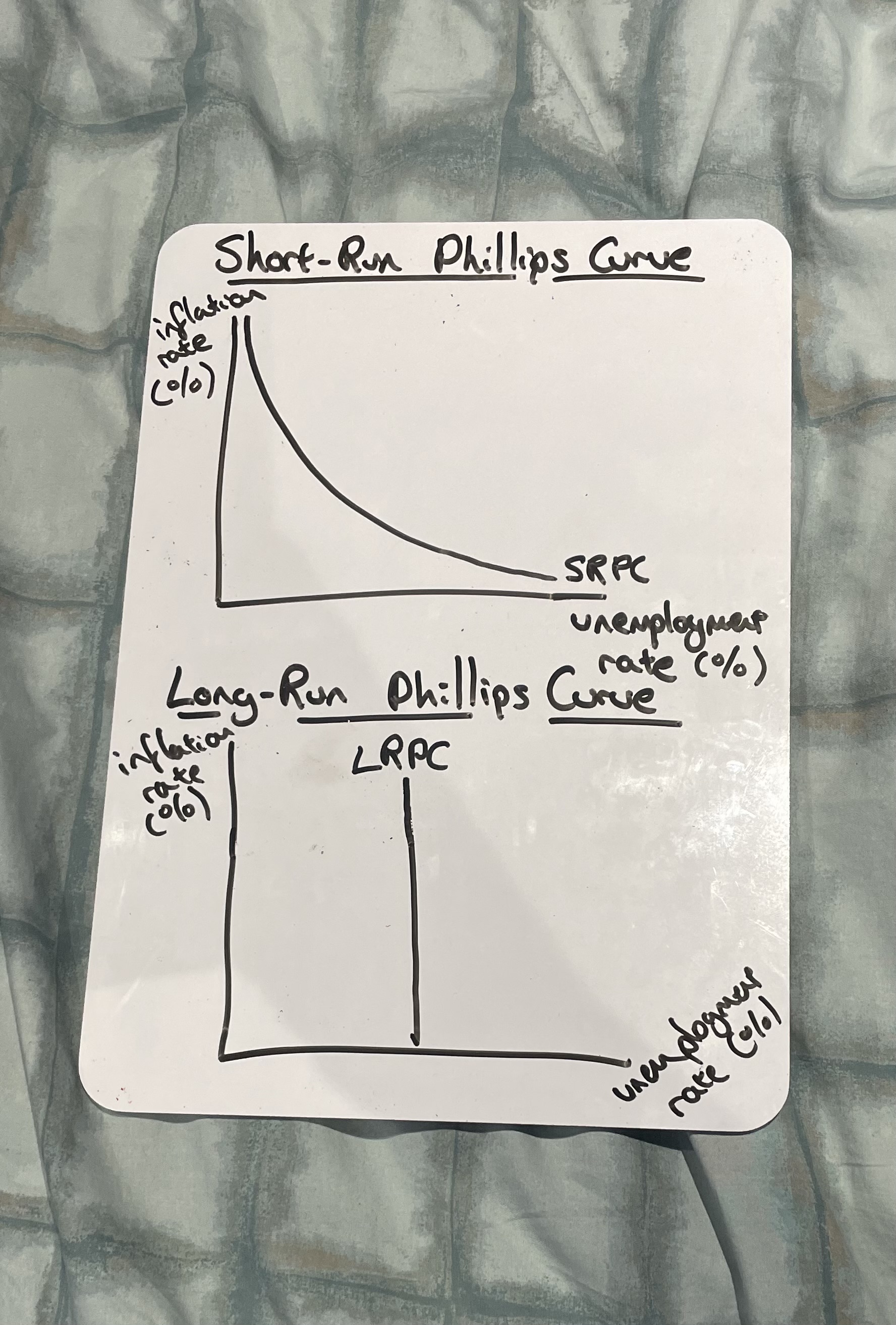11.4 Possible Conflicts Between Macroeconomic Policy Objectives
1/12
There's no tags or description
Looks like no tags are added yet.
Name | Mastery | Learn | Test | Matching | Spaced |
|---|
No study sessions yet.
13 Terms
Why does a positive output gap lead to inflation
Excess demand over capacity causes firms to raise prices
Why does a negative output gap reduce inflation
Unused resources mean low demand pressures, keeping prices stable or falling
How do output gaps affect unemployment
Negative output gaps increase unemployment; positive gaps reduce it
Draw the short-run and long-run Philips curve

What happens when demand-side policies reduce unemployment in the short run according to Bill Phillips
Inflation rises due to increased consumer spending and wage pressure
Why is the long-run Phillips curve vertical
Because in the long run, unemployment returns to its natural rate, regardless of inflation
Why are demand-side policies ineffective at reducing unemployment in the long run
Because any gains in employment are offset by rising inflation, with unemployment returning to its natural rate
What kind of policies are recommended to reduce long-term unemployment
Supply-side policies like education,training, and labour market reforms to improve workforce skills and flexibility
What is the ‘natural rate of unemployment’
The level of unemployment that persists in the long-run when the economy is at full capacity
Why can economic growth conflict with inflation control
Rapid growth raises aggregate demand, which can lead to demand-pull inflation if the economy is near full capacity
How does economic growth potentially worsen a country’s current account
Increased incomes raise demand for imports, leading to a larger current account deficit, especially in countries like the UK with high import propensities
In what way can economic growth harm the environment
It often leads to higher emissions, pollution, and the depletion of non-renewable resources due to increased industrial actitivity
How does cutting a budget deficit potentially reduce economic growth
It involves reducing government spending or raising taxes, which lowers aggregate demand and slows growth